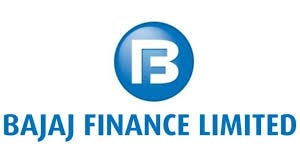In India, achieving profitability remains a challenge for companies and startups, with limited avenues available for entities to generate consistent profits or “super-profits.” In this context, lending has emerged as a lucrative option for companies looking to enhance their earnings. However, a major limitation exists—only banks are legally permitted to lend directly to the public.
To overcome this, companies have found a strategic solution that has rapidly gained popularity: acquiring an existing Non-Banking Financial Company (NBFC) or registering themselves as an NBFC to engage in public lending. This approach allows companies to operate within the regulatory framework, providing a path to enter the financial services sector and leverage lending as a profitable business line.
This trend highlights how NBFCs have become instrumental for companies aiming to expand their revenue streams and improve overall profitability in a competitive market.
Introduction
Non-Banking Financial Companies (NBFCs) in India have long been an integral part of the financial ecosystem, providing access to credit where traditional banks may hesitate. However, in recent years, they’ve become much more than just a financing solution for consumers. NBFCs are increasingly seen as a profitable business opportunity for established companies and startups alike, as they leverage the sector’s growth potential and regulatory flexibility. Startups like CRED, which recently entered the NBFC space through NewTap Finance, illustrate a broader trend of tech-driven firms tapping into financial services to enhance profitability and diversify revenue streams.
This article explores how NBFCs are creating profitable opportunities for companies and startups in India, along with the key drivers and challenges within this evolving landscape.
Why NBFCs Are Attractive for Companies and Startups?
The appeal of the NBFC sector for companies lies in its potential to tap into a wide range of markets, from consumer credit and microfinance to infrastructure financing. The regulatory environment allows NBFCs some flexibility in structuring their financial products, making them a versatile tool for revenue generation. For startups, the NBFC model provides an entry point to offer credit and finance-related services to customers directly, boosting both revenue and customer engagement.
Here are some key reasons why NBFCs have become an attractive option:
1. High Demand for Credit in Underserved Segments: Traditional banks often limit lending to customers with established credit histories. NBFCs, on the other hand, cater to riskier or underserved segments, including rural customers, small businesses, and individuals with limited credit histories. This presents an opportunity for companies to enter these high-demand segments.
2. Digital and Data-Driven Advantage: Startups entering the NBFC sector, like CRED, leverage advanced data analytics, AI, and machine learning to assess risk and streamline the lending process. By analyzing customer spending patterns and credit behaviors, they can develop unique lending models that increase profitability.
3. Enhanced Customer Loyalty and Retention: Companies with an existing user base can provide credit solutions to strengthen customer loyalty. Offering credit services encourages customer retention, as seen with companies like CRED, which already has a significant user base among credit card holders and can offer personalized credit options.
4. Diversification of Revenue Streams: The NBFC model allows companies to diversify their revenue sources. For example, CRED initially focused on rewards for credit card users but has expanded into the financial services sector to generate revenue through lending, transaction fees, and interest income.
Case Study: CRED’s Entry into the NBFC Sector with NewTap Finance
CRED’s entry into the NBFC sector through NewTap Finance highlights how a tech-driven startup can leverage its data, customer base, and brand trust to build a profitable lending business. CRED’s core business model focuses on rewards and loyalty programs for credit card users, and NewTap Finance is a natural extension of that model, enabling it to offer short-term loans and credit products to its user base.
Targeted Lending Model: CRED already has access to detailed insights on the spending behavior and creditworthiness of its users. This data gives NewTap Finance a distinct advantage, enabling it to provide customized loan offerings that are lower-risk and more profitable.
Expanding Revenue Channels: By providing credit through NewTap Finance, CRED can generate revenue from interest payments and fees associated with loans, further diversifying its income.
Data-Driven Risk Management: Through its access to extensive user data, CRED can implement sophisticated algorithms for credit scoring and risk assessment, reducing defaults and enhancing profitability in the NBFC model.
How NBFCs Can Support Startup Profitability and Scalability?
For startups, the NBFC model provides a pathway to profitability and scalability. Here’s how:
1. Increased Monetization through Financial Services: Startups with large user bases can integrate lending services to monetize customer engagement. For instance, fintech startups that started with payment or rewards services, like CRED, can extend into credit products to capture new revenue streams without significantly altering their core business.
2. High Margins on Financial Products: The financial services sector, especially in lending, is inherently high-margin. By using NBFC licenses, startups can issue personal loans, small business loans, and buy-now-pay-later (BNPL) offerings with higher margins than traditional tech products.
3. Strategic Partnerships and Cross-Selling Opportunities: By entering the NBFC space, startups can leverage partnerships with banks, fintechs, and other institutions to expand their customer base and offer a variety of products. For example, they can provide co-branded credit products, insurance, and investment options, increasing overall profitability.
4. Scalability through Digital Infrastructure: With a largely digital model, NBFCs managed by startups can reach a broader customer base without the high operating costs associated with traditional banks. Digital platforms allow NBFCs to quickly scale their services across India, reaching both urban and rural markets.
Key Challenges and Regulatory Considerations
While NBFCs offer significant profit potential, they also come with challenges that companies must navigate:
Regulatory Compliance: The Reserve Bank of India (RBI) has tightened regulations on NBFCs, imposing stricter capital requirements and oversight to prevent systemic risk. Startups must comply with these regulations, which can involve significant costs.
According to RBI's Handbook of Statistics on Indian Economy, aggregate public deposits of NBFCs stood at Rs 1.03 lakh crore at the end of March, registering a 20.8% year-on-year jump. In fact, the NBFCs have booked 20.8% growth for the past two consecutive years in FY23 and FY24, data showed.
In contrast, banks witnessed deposits growth of 9.6% in FY23.
Risk of High NPAs: Lending to higher-risk customers, often the target market for NBFCs, can lead to elevated non-performing assets (NPAs). This risk requires sophisticated credit assessment models and efficient collection mechanisms.
Intense Competition: The NBFC space is becoming crowded, with both established players and new entrants competing for market share. This can impact profitability, especially if the competition leads to aggressive interest rate pricing.
Funding Limitations: Unlike banks, NBFCs cannot accept demand deposits, which limits their funding sources to market borrowings, non-convertible debentures (NCDs), and term loans. Startups must manage these limitations and seek innovative funding options, such as securitization or partnerships.
The situation is tighter than ever…
The central bank has issued a clear warning by reducing the number of deposit-taking NBFCs to 25 in FY24, down from 34 last year, signalling its discomfort with NBFCs accepting public deposits due to the weaker regulatory oversight compared to banks.
This number has sharply declined from 240 a decade ago. Top central bankers caution that even the tighter rules for upper-tier NBFCs are still not as stringent as those governing banks, posing potential risks.
Currently, only NBFCs with a "BBB-" rating or higher are allowed to raise public deposits, limited to terms of 12 to 60 months. Unlike banks, they cannot offer demand deposits, such as current or savings accounts, underscoring the regulator’s continued concern over NBFCs’ handling of public funds.
If you like the hard work we put in, you can invest in us:
For our Non-Indian audience: You can donate to us through PayPal. Click here.
For our Indian audience, UPI QRs are given below:
Companies Which have Successfully Leveraged the NBFC model.
1. CRED:
Originally a rewards platform for high-credit-score individuals, CRED has transformed its business by entering the lending market. By acquiring NewTap Finance, an existing NBFC, CRED gained the ability to offer personal loans to its user base of affluent credit card holders. This move allowed CRED to diversify its revenue streams beyond rewards and membership fees, introducing loan products to users already familiar with its platform. CRED’s NBFC operation lets it leverage user spending data to assess creditworthiness, creating personalized lending products that reduce default risk and improve profitability.
2. Bajaj Finance:
Bajaj Finance, a subsidiary of Bajaj Finserv, is a textbook example of an NBFC maximizing profitability in consumer finance. Unlike banks, which might focus on low-risk borrowers, Bajaj Finance has built a diversified portfolio that includes consumer durable loans (for items like appliances and electronics), personal loans, and EMI financing options. Its consumer lending services, often provided at the point of sale, have made it popular among middle-income households. Bajaj Finance has also entered segments like SME financing, insurance, and wealth management, making it one of the most profitable NBFCs in India by capitalizing on its wide range of high-yield products.
3. Pine Labs:
Pine Labs, known for its point-of-sale (POS) technology, expanded into lending by setting up an NBFC arm to offer financing to small and medium businesses. The company leveraged its relationships with merchants, who use its POS devices, to offer business loans tailored to meet short-term and working capital needs. This NBFC strategy provided Pine Labs with a unique advantage: it could target merchants it already knew well, with loans customized to each merchant’s revenue cycle and transaction patterns. By doing so, Pine Labs diversified its revenue from transaction fees to interest income and opened new growth avenues.
4. Lendingkart:
Lendingkart, a digital-first lending platform, operates as an NBFC focusing on small businesses that often lack access to traditional bank loans. The company uses advanced algorithms and data analytics to quickly assess a borrower’s creditworthiness, even for applicants with limited credit histories. This model allows Lendingkart to issue loans faster than traditional banks and cater to underserved segments profitably. Its NBFC structure has enabled Lendingkart to scale rapidly, establishing a profitable niche by filling the financing gap in India’s SME sector with flexible and technology-driven lending products.
5. Capital Float (Now Axio):
As a digital lender focusing on SMEs, Capital Float leverages its NBFC license to provide working capital loans, consumer finance, and other credit solutions to small businesses. Through partnerships with e-commerce platforms, it offers easy financing options to online sellers, thereby expanding its customer base. By focusing on digital lending, Capital Float can reach SMEs nationwide, offering financing options often overlooked by traditional banks. This niche positioning within the NBFC framework has allowed Capital Float to grow profitably by tapping into India’s rapidly expanding digital economy.
6. Muthoot Finance and Manappuram Finance:
Muthoot Finance and Manappuram Finance are two of India’s leading gold loan providers, specializing in quick, collateral-backed loans against gold jewelry. Operating as NBFCs, they benefit from a business model that offers high returns with relatively low default risk, as gold provides immediate collateral. By targeting rural and semi-urban markets where gold is a primary asset, these companies have established a profitable foothold in India’s financial services landscape. Their focus on gold-backed lending has allowed them to maintain steady profitability, even during economic downturns, as the demand for quick cash and secured loans remains high.
Notable Mergers and Acquisitions in the NBFC Sector
Mergers and acquisitions in the NBFC space indicate a growing interest from companies looking to expand into financial services:
CRED’s Acquisition of NewTap Finance: CRED’s acquisition of NewTap Finance allowed it to obtain an NBFC license and offer credit to its user base. This acquisition underscores how companies with existing customer data can capitalize on the NBFC model to enhance profitability.
Kotak Mahindra Bank’s Acquisition of Sonata Finance Pvt Ltd: Kotak’s acquisition of Sonata Finance is part of a broader strategy to strengthen its presence in the microfinance segment, tapping into a profitable market for small loans.
HDFC Bank’s Merger with HDFC Ltd: This high-profile merger is reshaping the NBFC landscape, showing that even large banks see the strategic value of housing finance companies (which are also regulated as NBFCs) as a way to diversify and expand lending portfolios.
The Future of NBFCs as a Profit Engine for Companies
The NBFC sector in India is poised for further growth, driven by demand for credit and digital transformation. For companies and startups, entering the NBFC space offers substantial profit opportunities, provided they can navigate the regulatory landscape and manage risks effectively. With digital lending, data-driven credit assessment, and partnerships, NBFCs offer companies a profitable avenue for expanding financial services and increasing customer engagement.
As more companies recognize the potential of NBFCs to drive revenue growth, we can expect continued innovation, increased competition, and strategic mergers in this sector. The success of players like CRED in the NBFC sector may inspire more startups and tech-driven companies to venture into financial services, further expanding the role of NBFCs in India’s financial ecosystem.
Conclusion
NBFCs in India have evolved from being supplementary lenders to becoming a powerful tool for companies and startups aiming to grow revenue and profitability. Through lending services, data-driven decision-making, and innovative partnerships, NBFCs are enabling companies to diversify and thrive in a competitive market. For startups, especially fintechs, entering the NBFC space can accelerate profitability and create synergies that enhance the customer experience and increase market share. As the sector continues to grow and adapt, NBFCs are likely to remain a critical piece of India’s financial inclusion and economic development story.
Thank you for reading till the end! We hope you enjoyed this article.
Researched By- Naresh, Mayank and Vaibhav















